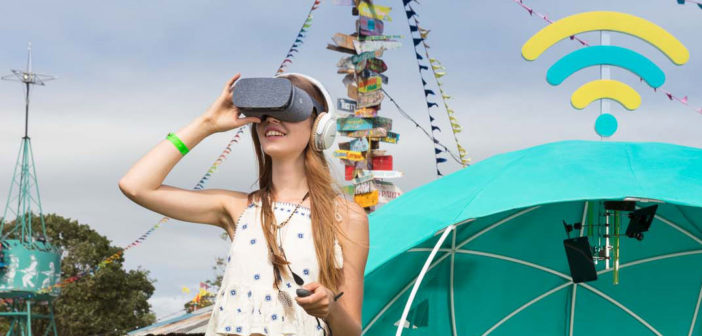By Robert Haslam, senior consultant, Big Ideas Machine
Let’s face it, we all love a bit of hype. It’s infinitely more exciting to speculate about the potential of new technology than it is to get excited about the here and now. Virtual reality (VR) has been one of those technologies on the hype curve for decades. But as excited as companies like HTC, Sony, Facebook and Google appear to be about VR, it’s likely not destined to be a mass consumer product. Instead, many of the ideas and experiences being developed today will become a training ground for the future of AR.
As excellent as virtual reality experiences can be, they are often just that; an experience. The best VR experiences often take place in a controlled environment, where objects are mapped out, and people can move around. It is for this reason that VR experiences are popping up at escape room adventures, such as those at Theme Parks around the world.
Controlled environments for VR
The reality of VR in the home is vastly different unless you happen to have a space dedicated to it. Experiences that work best in VR do not necessarily translate into everyday use cases for VR. You need too much of a controlled environment for it to be for everyone.
And this is why, when you look at the future of the technology, it seems clear that augmented reality (AR) devices come to dominate the tech space.
Already, we have smartphones, enterprise grade headwear and, as shown by Microsoft and Google, devices with lenses and screens that augment the world around you. AR isn’t going to just be the next smartphone-sized product category; it will make the size of the smartphone market look miniscule. It has the potential to consume every screen we use today.
Predictions from analysts and VC firms seem to also back up this thinking. Digi-Capital, a VC fund focused on AR and VR predicts that by 2021, the VR/AR industry will be worth $108 billion. Of the $108 billion, the firm forecasts that AR will account for $83 billion, with VR accounting for $25 billion.
There’s no denying that in certain use cases, VR is going to be a hugely important platform. It’s already helping doctors, pilots, emergency service teams and others to train. It’s being used to help people suffering from dementia and PTSD (see this TED talk by Dr Brenda Wiederhold about using VR to treat PTSD). It’s being used by architects to see inside buildings and see how different conditions affect building interiors – before anything gets built. To update a Steve Jobs analogy, VR is going to be like trucks. It has a lot of value, but it’ll only be used by one out of every X people.
Versatility and potential with AR
AR, on the other hand is much versatile and has the potential to replace pretty much every screen around us. Pokemon Go, as far from perfect as it was, and still is, helped to prove that AR can make serious money. Imagining what the Pokemon Go experience could be like on AR lenses gives a taste of what the experience could be one day.
In 2009, Apple made its initial play for augmented reality, by adding developer support for the technology in the iPhone 3GS.
After the initial hype that started back in 2009 from companies like Qualcomm, Layar and Blippar, AR has come a long way. While a phone is still not the best device for AR, the technology behind AR and the power of smartphones, combined, makes the experience now more impressive.
This year, Apple is once again encouraging developers to go crazy with the hugely impressive ARkit which demonstrates how significantly AR has progressed since the iPhone 3GS started supporting the technology. ARkit is able to remember precisely where an experience is meant to be, and keep it there, with dynamic lighting thrown in too.
But it’s not just experiences like this we should be looking forward to. With iOS 11, Apple has already shown one interesting application for AR; document scanning. Its upgraded Notes app uses image recognition and ARkit to identify a document from across a room, take a photo of it and make it look like a scanned document.
Take off the training wheels
I believe VR is a training ground for AR. Developers and storytellers that are creating great experiences in a 3D world, with lifelike 3D models on VR will soon be able to apply their ideas to AR.
Using AR to interact with physical objects will be one of the biggest leaps in how we use technology. Imagine being at home with a bunch of different ingredients in front of you. AR, with object recognition, would be able to identify what you have and then find a recipe for you to make. It could also teach you how to cut different types of vegetables.
Or, let’s say you’re watching a TV programme and like what someone is wearing. As you’ll likely be watching the show on a device that enables you to pause, you’ll be able to point your phone at the screen, and AR would be able to identify the outfit, and whether it’s available to buy. You’d then be able to walk to a mirror and see what the outfit looks like on you before clicking to order.
Ikea has already signed a deal with Apple to use ARKit for people to view products in their own home. This isn’t the first time IKEA has used AR for this purpose. However, because of the advances with AR, this will likely be the first time it doesn’t feel like a gimmick.
VR is helping people experience in a new reality and help businesses to improve in many ways. Yet, it won’t be something that everyone gets to try. AR, on the other hand, will be and already is getting people ready to interact with the world in a new way. We’ve seen this with Pokemon Go and filters in apps like Snapchat, Facebook, MSQRD and more. The technology that makes those experiences interesting is reaching a point where people really will feel they are seeing things in their eye sight (initially through a mobile device, later through glasses or lenses).
And when you pair AR with technologies like artificial intelligence and image or object recognition, the possibilities of what the technology is capable of really starts to open up. With companies like Magic Leap, Google and reportedly Apple all working on consumer friendly lenses or glasses, it can’t surely be long before we’ll be able to benefit from it.
Big Ideas Machine uses a mix of PR, SEO, social media and content creation for a multi-channel approach to drive quality leads and get the job done.





